
Public Speaking for Authors, Creatives and Other Introverts
¥60.96
Are you an introverted author or creative? Do you want to improve your public speaking ability?As creatives in a crowded world, we can no longer sit in our rooms, creating alone, if we want a viable income. Increasingly, we have to be out there in the world, sharing our knowledge and being visible in order to have a successful career. Public speaking can be an extra income stream, or can form an integral part of your marketing. It's also a good idea to plan for success and authors/creatives often have to speak when they become well-known, so it's best to start practicing earlier. This book is a starter pack and an easy reference guide with the information that you need the most to speak confidently and professionally in public. And, although some chapters have specific tips for introverts, much of this information will be useful for anyone who is interested in public speaking, regardless of their personality type. In this book, I'll share everything that I know as a professional speaker and introverted author-entrepreneur. The book contains lots of tips about public speaking in general, based on my own experience over the last five years. In addition, I cover some specific points that creative introverts need to consider as speakers. You can read this book from start to finish, but you can also dip in and out, as each chapter contains succinct tips that you'll need at different times on your journey. In this book, you will find: Part 1 goes into the practicalities of speaking: types of speaking, preparation, your actual talk, and what happens afterwards. Part 2 is about some of the psychological aspects of speaking: your mindset, authenticity, confidence, and tackling the inevitable anxiety, which we all feel. Part 3 discusses the business side of speaking: financials, marketing, and how to create multiple streams of income. Part 4 contains interviews with three fantastic professional speakers, each from a different market, to give you a variation in perspective. Mark McGuinness is an introvert, Clare Edwards is an extrovert and Alastair Humphreys sits somewhere in the middle.? There are also videos, audio and extra image-formatted transcripts, so you can experience this information in other modes if you prefer. The Appendices contain resources that may be useful in your speaking journey, including my own speaking checklist and booking form, example sales page and a series of questions for you to answer that will kickstart your public speaking.??? I’m an author and professional speaker, and I’m also an introvert. I often get asked how I do what I do, when our natural tendency is to relish being alone and creative, not standing in front of a crowd. In this book, I share everything I’ve learned about being a speaker and creative over the last 5 years of speaking internationally, in front of large and small audiences. I also dispel some of the myths around being a speaker. You don’t have to be Tony Robbins, bouncing around on stage with a booming voice and larger than life persona. You just have to be you, and tell your stories. If you're ready to improve your public speaking, download a sample or buy now.

A lány a vonaton
¥79.95
Ritkaság, hogy egy k?nyv vezesse t?bb országban egyszerre, szinte az ?sszes fontos sikerlistát. A New York Timesét és a BarnesandNoble-ét, például. Az végképp szokatlan, hogy ezt egy debütáló író tegye.2015 elején Paula Hawkins regénye berobbant az angolszász piacokra. Ahogy Stephen King fogalmazott, ebben a t?rténetben csak fokozódik és fokozódik a feszültség. Nem véletlenül hasonlítják Hitchkockhoz és Agatha Crhristie-hez az írót, a Gone girlhez a t?rténetet.Rachel ingázó, minden reggel felszáll ugyanarra a vonatra. Tudja, hogy minden alkalommal várakozni szoktak ugyanannál a fénysorompónál, ahonnan egy sor hátsó udvarra nyílik rálátás. Már-már kezdi úgy érezni, hogy ismeri az egyik ház lakóit. Jess és Jason, így nevezi ?ket. A pár élete t?kéletesnek t?nik, és Rachel sóvárogva gondol a boldogságukra.?s aztán lát valami megd?bbent?t. Csak egyetlen pillanatig, ahogy a vonat tovahalad, de ennyi elég.A pillanat mindent megváltoztat. Rachel immár részese az életüknek, melyet eddig csak messzir?l szemlélt.Meglátják; sokkal t?bb ?, mint egy lány a vonaton.
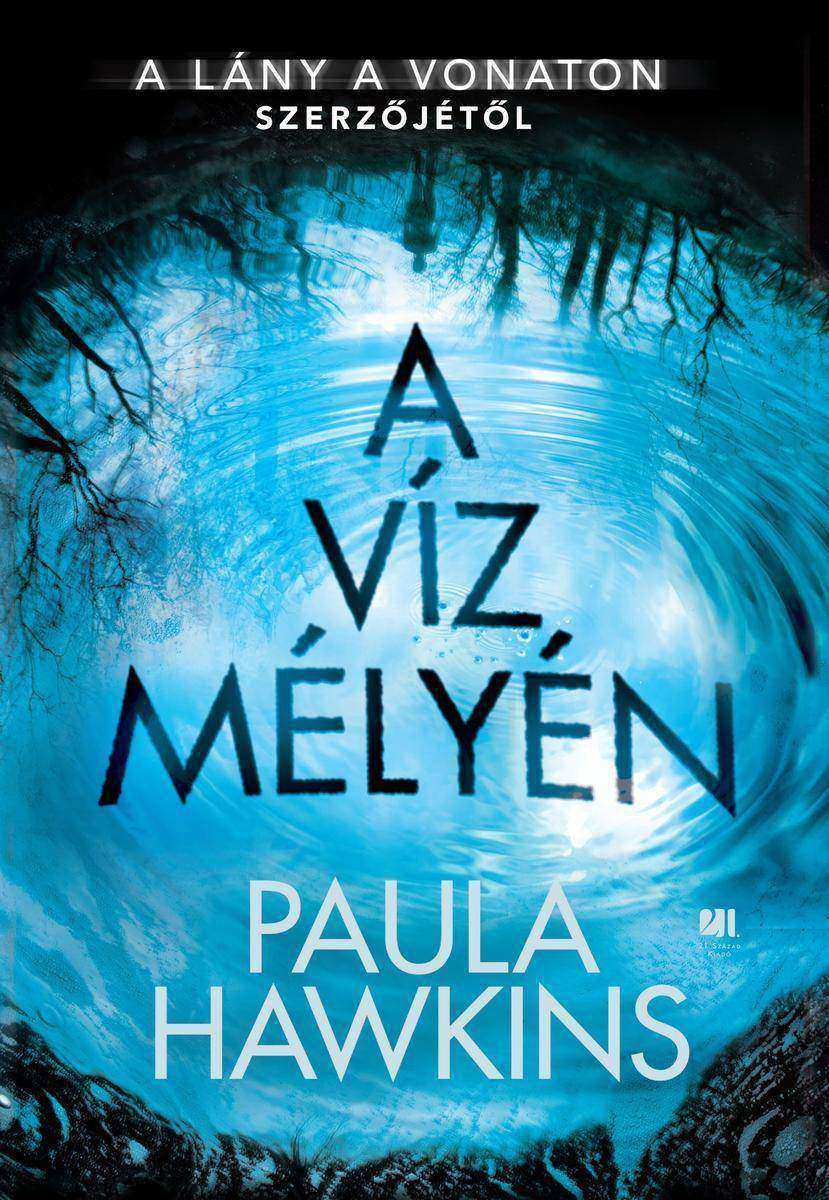
A víz mélyén
¥79.95
A várost átszel? folyóból holtan húznak ki egy fiatal n?t. Néhány hónappal korábban egy sérülékeny tinédzser lány végezte ugyanott, ugyanígy. El?ttük évszázadokon át asszonyok és lányok hosszú sora lelte halálát a s?tét vízben, így a két friss tragédia régen eltemetett titkokat bolygat meg - és hoz felszínre.Az utolsó áldozat árván maradt, tizen?t éves lányának szembe kell néznie azzal, hogy félelmetes nagynénje lett a gondvisel?je, aki most kényszeredetten tér vissza oda, ahonnan annak idején elmenekült, és ahová szíve szerint soha nem tette volna be újra a lábát. A folyóparti ház eresztékei éjjelente hangosabban nyikorognak, a fal t?vében susogó víz kísérteties neszekkel t?lti meg az egyébként zavartalan csendet. A lány a vonaton cím? regényhez hasonlóan PAULA HAWKINS újabb t?rténete is megállíthatatlanul sodorja az olvasót a végkifejlet felé, bizonyítva, hogy az írón? nagy ismer?je a n?i léleknek és az emberi ?szt?n?knek. A lány a vonaton az elmúlt évek legnagyobb sikere volt a magyar és a nemzetk?zi k?nyvpiacon. A szerz? második thrillerére két évet kellett várni. De - ahogy az els? olvasók egybehangzóan állítják - megérte.

Uma novinha em minha vida
¥8.18
Otávio vivia tranquilamente sua vida de aposentado com a esposa. Sua rotina despreocupada mudou quando sua esposa trouxe para morar com eles uma sobrinha distante.A sobrinha era uma novinha de 17 anos, cabelos ruivos e seios fartos. Como qualquer homem de meia idade, Otávio gamou na novinha e, mesmo resistindo, caiu em tenta??o.Uma tenta??o que lhe custou tudo.

Siddhartha
¥7.85
Digitalisiert vom Projekt Gutenberg Eine indische Dichtung ist eine Erz?hlung von Hermann Hesse, die im S. Fischer Verlag in Berlin im Jahr 1922 zum ersten Mal ver?ffentlicht wurde. Siddhartha, der Brahmane Das Buch handelt von einem jungen Brahmanen namens Siddhartha und seinem Freund Govinda. Der von allen verehrte und bewunderte Siddhartha widmet sein Leben der Suche nach dem Atman, dem All-Einen, das in jedem Menschen ist. Siddhartha, der Samana Seine Suche macht aus dem Brahmanen einen Samana, einen Asketen und Bettler. Govinda folgt ihm auf diesem Weg. Siddhartha spürt jedoch nach einiger Zeit, dass ihn das Leben als Samana nicht an sein Ziel bringen wird. Zusammen mit Govinda pilgert er zu Gautama, dem Buddha. Doch dessen Lehre kann er nicht annehmen. Siddhartha erkennt zwar, dass Gotama Erleuchtung erlangt hat und zweifelt die Richtigkeit seiner Lehre nicht an, jedoch glaubt er, diese sei allein für Gotama selbst gültig. Man kann nicht durch Lehre Buddha werden, sondern muss dieses Ziel mittels eigener Erfahrungen erreichen. Aus dieser Erkenntnis heraus begibt er sich erneut auf die Reise und beginnt einen neuen Lebensabschnitt, w?hrend sich sein Freund Govinda Gotama anschlie?t. Siddhartha bei den ?Kindermenschen“ Intensiv erf?hrt er nun seine Umgebung und die Sch?nheit der Natur, welche er zuvor als Samana zu verachten lernte. Er überquert einen Fluss, wobei ihm der F?hrmann prophezeit, er werde einst zu diesem zurückkehren, und erreicht eine gro?e Stadt. Hier begegnet er der Kurtisane Kamala, die er bittet, seine Lehrerin in der Kunst der Liebe zu werden. Um sich ihre Dienste leisten zu k?nnen, wird er Kaufmann. Anfangs sieht er das Streben nach Erfolg und Geld nur als eine wunderliche Eigenart der ?Kindermenschen“, wie er die dem Weltlichen ergebenen Menschen nennt. Bald wandelt sich jedoch sein ?bermut in Hochmut und er wird selbst den Kindermenschen immer ?hnlicher. Erst ein Traum führt ihm dies vor Augen und erinnert ihn wieder an seine

Az eltemetett óriás
¥86.00
'Alegreya Sans',sans-serif; font-size: 16px; font-variant: normal; font-weight: normal; letter-spacing: normal; line-height: 21px; text-align: start; text-indent: 0px; text-transform: none; white-space: normal; word-spacing: 0px; display: inline ! important; float: none; background-color:Lélegzetelállítóan szép t?rténet arról, miért vágyunk feledni, és miért kell mégis emlékezni. 'Alegreya Sans', sans-serif; font-size: 16px; font-style: normal; font-variant: normal; font-weight: normal; letter-spacing: normal; line-height: 21px; orphans: auto; text-align: start; text-indent: 0px; text-transform: none; white-space: normal; widows: 1; word-spacing: 0px; -webkit-text-stroke-width: 0px; display: inline !important; float: none; background-color: Nagyregényt tart a kezében az Olvasó, a szó legnemesebb értelmében. Kazuo Ishiguro, a japán származású brit regényíró Az eltemetett óriás-sal szimbolikus t?rténetet ajándékozott a világirodalomnak, ami, mint minden nagy el?dje, az élet és halál mérlegén megmért emberi sorskalandról mesél, helytállásról vagy elbukásról a h?ség és árulás, háború és béke, szerelem és barátság próbáiban.
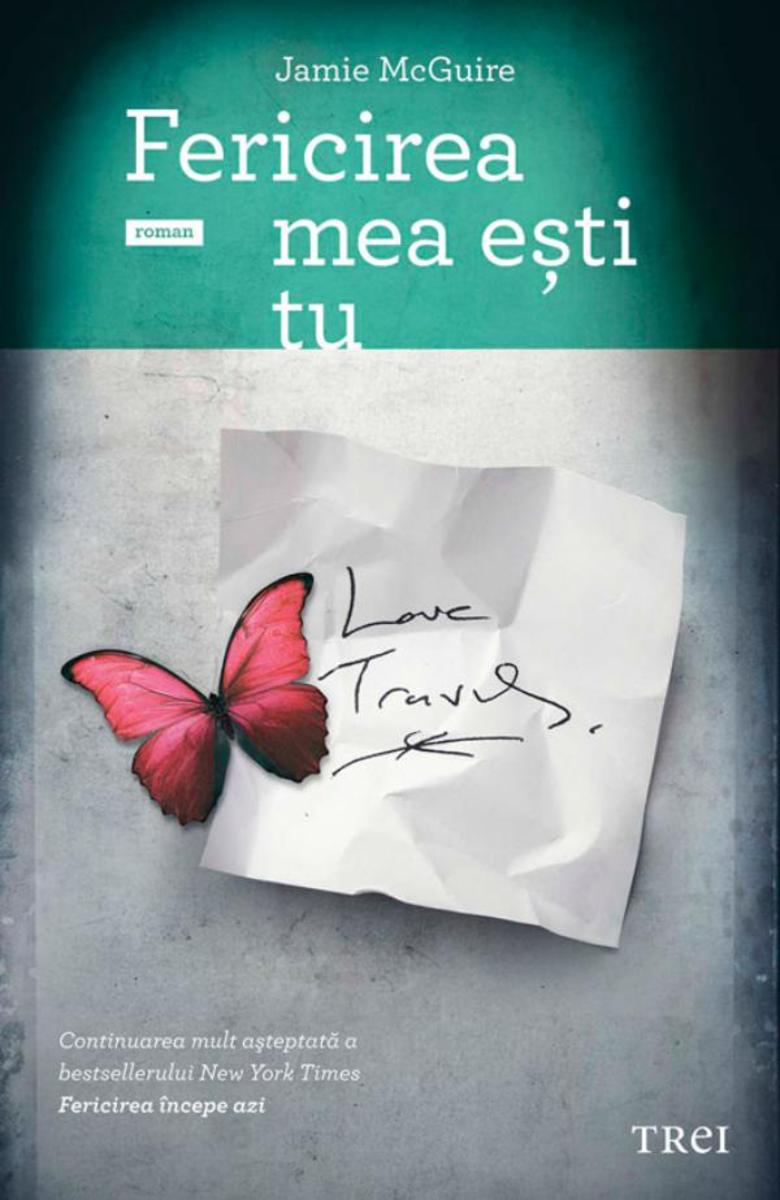
Fericirea mea e?ti tu
¥81.67
Continuarea mult a?teptat? a bestsellerului Fericirea ?ncepe aziAfl? ce este ?n mintea b?rba?ilor!Travis Maddox a ?nv??at dou? lucruri de la mama sa ?nainte ca aceasta s? moar?: Iube?te mult. Lupt? ?i mai mult pentru iubirea ta.?n Fericirea mea e?ti tu, via?a lui Travis e plin? de femei care vin ?i pleac?, de jocuri de noroc ilicite ?i de violen??. ?ns? tocmai c?nd Travis se consider? invincibil, Abby Abernathy ?l pune la p?m?nt.Fiecare poveste are dou? versiuni. ?n Fericirea ?ncepe azi, Abby vorbe?te ?n numele ei. Acum e timpul s? citim povestea prin ochii lui Travis.?Travis e un tip impulsiv. ?ncerc?nd s? scriu din punctul lui de vedere, am ?tiut c? nu puteam s? spun povestea din nou, pur ?i simplu. Mi-am ?ndreptat aten?ia asupra perioadei c?nd Abby ?i Travis nu erau ?mpreun?, pentru ca romanul s? aduc? lucruri noi ?i am sentimentul c? am reu?it s? fac ce mi-am propus.“ – Jamie Mcguire?Fericirea mea e?ti tu are avantajul c? vine dup? o poveste emo?ionant?, pe care o completeaz?, ?i c? are un epilog ingenios, ce surprinde un instantaneu din via?a lui Travis ?i a lui Abby ?n viitor.“ – Reading, Eating Dreaming?Travis Maddox continu? s? lupte pentru ceea ce iube?te. Ce ?i-ai putea dori mai mult de la un b?rbat?“ – Bookwhisperer Reviews?Am f?cut o adev?rat? pasiune pentru personajele acestui roman.“ – The Daily Quirk

Secure & Simple – A Small-Business Guide to Implementing ISO 27001 On Your Own
¥326.92
Secure Simple Dejan Kosutic, an author and experienced information security consultant, is giving away all his practical know-how on successful ISO 27001 implementation. Whether you’re new or experienced in the field, this book gives you everything you will ever need to implement ISO 27001 on your own. Dejan provides examples of implementing the standard in small and medium-sized organizations (i.e. companies with up to 500 employees). It is written primarily for beginners in the field and for people with moderate knowledge of ISO 27001. Even if you do have experience with the standard, but feel that there are gaps in your knowledge, you’ll find this book very helpful. Secure Simple is the definitive guide for implementing and maintaining the most popular information security standard in the world. The author leads you, step-by-step, from an introduction to ISO 27001 to the moment your company passes the certification audit. During that journey you will learn: The most common ISO 27001 myths, like “The standard requires xyz;” “We’ll let the IT department handle it;” “We’ll implement it in a couple of months;” and others.How to convince your top management to implement ISO 27001. “If you think that your management loves to listen to your great idea about a new firewall, or the perfect tool you've discovered for handling incidents, you're wrong – they just don't care.” This book will help you speak the language they want to hear.How to write the Risk Assessment Methodology plus other policies and procedures.How to identify potential risks.“Employees (and the organization as a whole) are usually aware of only 25 to 40% of risks – therefore, a thorough and systematic process needs to be carried out…” Learn how to identify all potential risks that could endanger the confidentiality, integrity, and availability of organization’s information.What are the most important steps in order to prepare a company for the certification, and much more. Written in plain English with a lot of practical examples, charts and diagrams, it is the only book you’ll need on the subject of ISO 27001 implementation.

Un pact cu diavolul
¥7.36
A fost poreclit Contele Diavol – un b?rbat cu spirit nesupus, acuzat de crim?, crescut pe str?zile periculoase ale Londrei ?i care nu-?i mai aminte?te nimic despre trecutul lui. Orice domni?oar? bine educat? ?tie c? risc? mai mult dec?t reputa?ia atunci c?nd ??i asociaz? numele cu frumosul Lucian Langdon, ?ns? Lady Catherine Mabry nu are alt? solu?ie. Ar face orice pentru a-i proteja pe oamenii pe care ?i iube?te… chiar ?i s? ajung? la o ?n?elegere cu ?nsu?i diavolul. Lucian vrea s? fie respectat ?i, mai presus de asta, ??i dore?te o so?ie. Problema este c? aleasa lui nu cunoa?te eticheta pe care trebuie s? o respecte ?n mijlocul aristocra?iei ?i nu e acceptat? de ?nalta societate. Catherine ?l poate ajuta pe Lucian s? dob?ndeasc? tot ce-?i dore?te. Dar pre?ul pe care ?l cere ea ?n schimb le poate pune chiar vie?ile ?n pericol. Atunci c?nd primejdia le d? t?rcoale, cei doi se descoper? cu adev?rat: Lucian se dovede?te a fi un b?rbat incredibil de pasional, iar Catherine, o femeie de un curaj nem?surat. Pe m?sur? ce ies la iveal? secrete din trecutul lui ?ntunecat, Lucian ajunge s? pun? sub semnul ?ntreb?rii toate lucrurile pe care le considera adev?rate, inclusiv dorin?ele propriei inimi.

Cuando el amor es una mala palabra
¥15.18
Cuando el amor es una mala palabra es una antología poética que reúne setenta y cinco expresiones de sentimiento escritas por mí desde los inicios del a?o 2008.En Cuando el amor es una mala palabra he plasmado diversas situaciones, reales o imaginarias. Mi única intención es que el lector se transporte a un mundo de muchas historias, en el cual tendrá una total libertad para interpretarlas.Las palabras incluidas en cada una de estas letras no pretenden discriminar. Están ordenadas de la manera como el amor hace lo suyo, con picos y abismos, cuando empieza, cuando se cruza con la desilusión y el dolor, y cuando termina con el deseo de renacer e intentarlo una vez más.Entonces, mejor es dejar que ellas mismas se presenten con su historia.

10 Receitas saudáveis para você ser fit
¥8.18
Quer entrar na academia e conquistar aquele corpito jóia?Muito bom! Exercícios físicos s?o fundamentais para alcan?ar a boa forma; mas, se você n?o se alimentar direito, vai gastar tempo (e dinheiro!) à toa na academia.Aprenda a preparar 10 receitas saudáveis para você ter uma alimenta??o leve e nutritiva; e assim, otimizar a sua vida fitness.

Вдох-выдох:Сборник рассказов
¥15.18
Вдох-выдох — это второй сборник рассказов Ирены Яновой. Первый сборник,Магические книги Невилов, вышел под псевдонимом Ирина Иванова в 2014 году. Знаете ли вы, кто такие энергетические вампиры и что они делают с накопленной энергией В рассказе Вдох-выдох, который дал название сборнику, автор предложила свою версию жизни такого человека. Рассказ Посылка поведает вам о том, что судьбу иногда определяет случай, а 23 реальность о любви. Причем о любви в другой реальности, где ты проживаешь иную жизнь, с другим человеком, с другой любовью. Эхо вселенной — лирический рассказ о космосе и о зарождении чувства на громадном расстоянии. Как помочь девушке, если знаешь, что с ней может приключиться беда Необычный герой, необычный способ помощи и судьба, которая не оставляет влюбленных. А что может произойти, если ваше сознание случайно осталось в вашем клоне Рассказ Человек, которого нет раскроет возможный вариант развития событий. Издательство Animedia Company желает вам приятного чтения.

Rebel Faerie
¥40.79
The fae world’s biggest secret has been revealed … Having escaped an Unseelie prince and a world of shadows, Emerson and Calla are now hunted by the Guild of Guardians. On the run, constantly trying to remain one step ahead, they must figure out how to find and rescue everyone the Guild has taken from them. Then, in an unprecedented move, Unseelie Prince Roarke breaks the fae realm’s most important rule. Now two worlds stand on the brink of war. Caught in the middle between guardians and Prince Roarke’s forces, Em knows her Griffin Ability is powerful enough to stop them both. But as she masters control of her unique magic, Em is confronted with a question: how far is too far when you possess the kind of power she was born with? Can she step back from the line that shouldn’t be crossed, or will she end up losing herself before finding those she loves? Join Emerson and her companions in this race to save two worlds and the people they love in the final Creepy Hollow adventure!
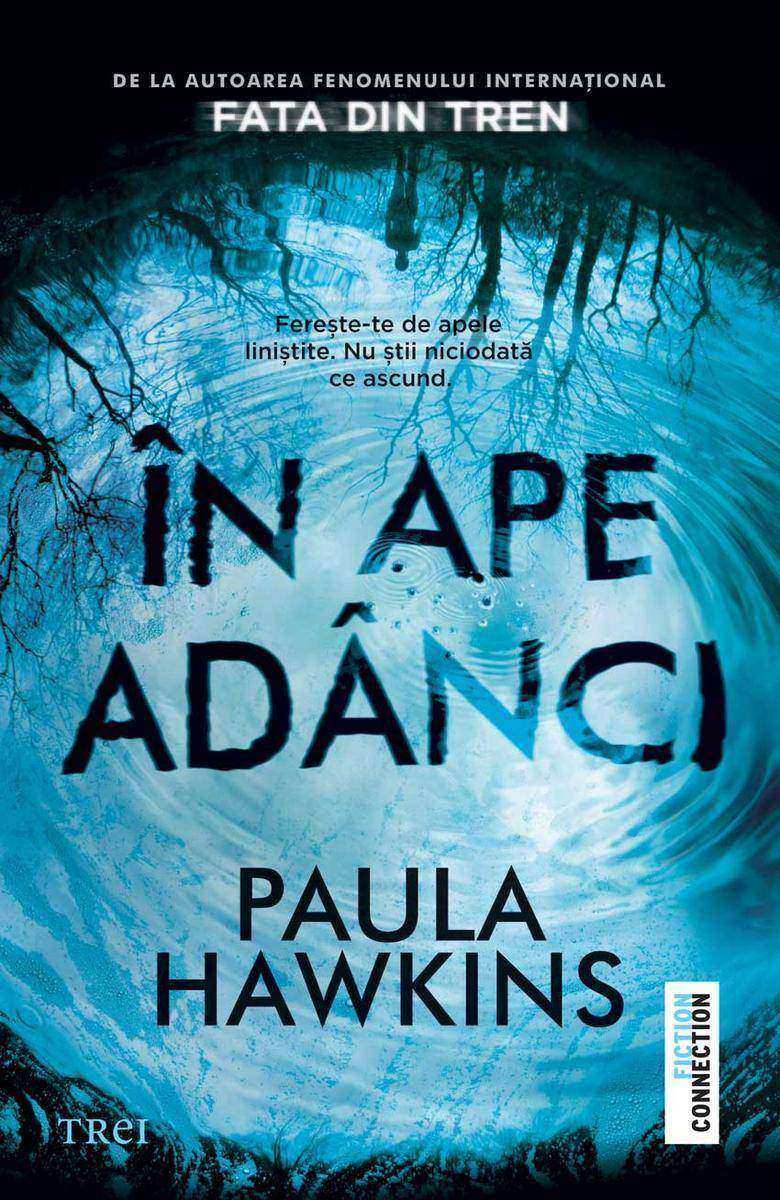
?n ape ad?nci
¥81.67
Nel Abbott este moart?. E ultima dintr-un lung ?ir de femei ?nghi?ite de apele ?ntunecate ale r?ului.Sora ei, Jules, e m?cinat? de regretul c? i-a ignorat strig?tul de ajutor ?i are certitudinea c? Nel nu s-a sinucis. Fere?te-te de apele lini?tite. Nu ?tii niciodat? ce ascund."Te ?ntrebi dac? ?n ape ad?nci poate fi la fel de bun ca Fata din tren? E ?i mai bun. O capodoper?." - Clare Mackintosh, autoarea bestsellerului Te las s? pleci Paula Hawkins vine cu un thriller alert, provocator, ce analizeaz? caracterul iluzoriu al emo?iei ?i al amintirii, precum ?i modul tulbur?tor ?n care trecutul se poate insinua ?n prezent.Fiindc? a?a ?ncepe: cu ?notul vr?jitoarelor – proba de ap?. Acolo, la bulboana mea, ?n acel lini?tit col? de paradis aflat la mai pu?in de o mil? de unde sunt ?n clipa asta, aici le aduceau, le legau ?i le aruncau ?n r?u, ca s? se scufunde sau s? ?noate.Se spune c? femeile au l?sat ceva din ele ?n ap?, se spune c? apa p?streaz? ceva din puterile lor, fiindc? de atunci, le-a atras spre ??rmurile sale pe cele f?r? noroc, pe cele disperate, pe nefericite, pe r?t?cite. Vin aici ca s? ?noate cu surorile lor."?

Cei care pleac? ?i cei ce r?m?n. Al treilea volum din tetralogia napolitan?
¥73.49
Al treilea volum din Tetralogia Napolitan? ?n lini?tea cea mai deplin? sau ?n mijlocul evenimentelor tumultuoase, atunci c?nd ne sim?im ?n siguran?? sau ?n pericol, c?nd suntem nevinova?i sau imorali, suntem o mul?ime format? din ceilal?i. Iar aceast? mul?ime e cu siguran?? o binecuv?ntare pentru literatur?.?Elena Ferrante ?n al treilea roman al Tetralogiei Napolitane, Elena ?i Lila, cele dou? fete cu care cititorii au f?cut cuno?tin?? ?n Prietena mea genial?, au devenit femei.Lila ?i-a p?r?sit so?ul ?i confortul material, iar acum munce?te ?n condi?ii foarte dure. Elena a studiat la ?coala Normal? din Pisa ?i a publicat un roman de succes, care i-a deschis u?ile saloanelor selecte. Am?ndou? au refuzat s? se complac? ?ntr-o via?? plin? de nefericire, ignoran?? ?i supunere, ?mbr??i??nd ?n schimb numeroasele oportunit??i ale anilor ’70. ?n continuare le leag? o prietenie profund?, de nezdruncinat.?nc? de la apari?ia romanului?Prietena mea genial?, care deschide?Tetralogia Napolitan?, faima Elenei Ferrante a crescut enorm. Este considerat? una dintre autoarele contemporane cele mai conving?toare, o stilist? des?v?r?it?, cu o intui?ie artistic? ie?it? din comun, care a c??tigat admira?ia mai multor scriitori celebri – Jhumpa Lahiri, Elizabeth Strout, Claire Messud – ?i a unor critici importan?i: James Wood, John Freeman, Eugenia Williamson etc. Dar f?r? ?ndoial?, primirea cea mai c?lduroas? a avut-o din partea cititorilor, care au descoperit o autoare care vorbe?te ?ntr-un stil plin de frumuse?e ?i for?? despre sentimentul de apartenen?? la un loc, despre rela?iile umane, dragoste, familie ?i prietenie.
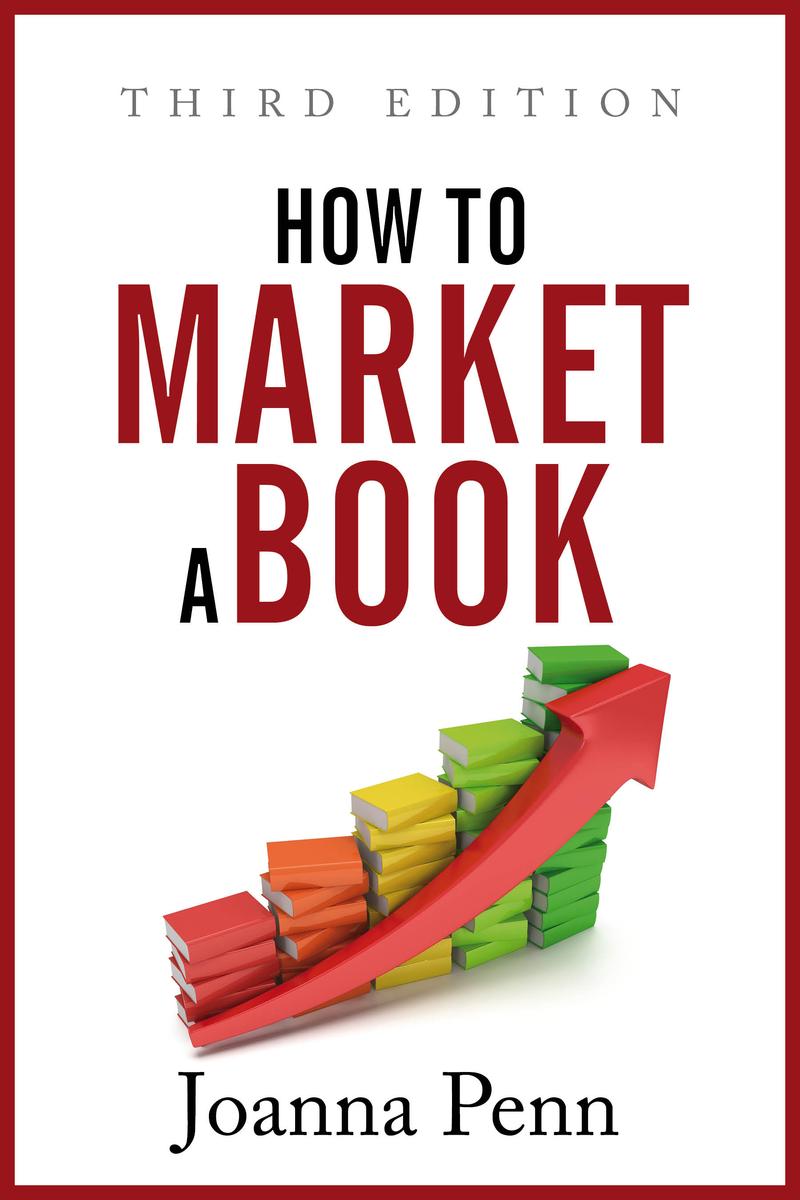
How to Market a Book:Third Edition
¥73.49
Do you want to sell more books and reach more readers? Do you want to discover how to build an author career for the long-term as well as spike your book sales right now? If you don’t know much about marketing, don’t worry. We all start with nothing. I’m Joanna Penn and back in 2008, I had no book sales, no audience, no website, no social media, no podcast, no email list. No nothing. Now I’m a New York Times and USA Today bestselling author of thrillers and non-fiction. My books have sold over 500,000 copies in 83 countries, and I’m an award-winning creative entrepreneur and international speaker, making a multi-six-figure income with my writing. Learning how to market my books and my personal brand changed my life. Yes, you need to write an awesome book, but you also need to know how to get it in front of the right readers. How to Market a Book is for authors who want to sell more books, but it's also for those writers who want to think like an entrepreneur and build a long-term income. It's for traditionally published authors who want to take control of their future, and for self-published authors who want to jump-start a career. There are short-term tactics for those who want to boost immediate sales, but the focus of the book is more about instilling values and marketing principles that will help your long-term career as a writer. It's also about going beyond just the book, because these methods can take you from being an author into making money from other products, professional speaking, and creating opportunities that you can't even imagine yet. In this completely updated Third Edition, you’ll discover: Part 1: Marketing Principles Book marketing myths, how discoverability works, and the polarities of marketing that will determine what you choose to implement Part 2: Your Book Fundamentals Prerequisites for success, how to optimise your book for online sales, categories and keywords, exclusivity, pricing and use of free, box-sets and bundling, and writing series Part 3: No Platform Needed. Short-term Marketing How to get customer reviews and find book bloggers, paid advertising with email blasts, paid advertising with Facebook, Amazon Ads and ad stacking, algorithm hacking, big data, and production speed Part 4: Your Author Platform. Long-term Marketing Building an author brand, author website, list-building and email marketing, content marketing, blogging, audio and podcasting, video and book trailers, social networking, professional speaking, marketing audiobooks, PR and publicity, TV, radio and traditional media Part 5: Launching Your Book Why launching is different for indie authors, soft launch, launch spikes, post-launch, how to relaunch backlist books. Includes an example book marketing strategy and launch plan checklist. Other books for authors by Joanna Penn. Available in ebook, print and audiobook. How to Make a Living with your Writing How to Write Non-Fiction: Turn your Knowledge into Words Business for Authors: How to be an Author Entrepreneur The Successful Author Mindset: A Handbook for Surviving the Writer's Journey The Healthy Writer Public Speaking for Authors, Creatives and Other Introverts Co-writing a Book: Collaboration and Co-Creation for Writers Successful Self-Publishing Career Change: Stop hating your job, discover what you really want to do with your life, and start doing it! Joanna’s website for authors, The Creative Penn, has been voted one of the Top 100 websites for writers by Writers Digest several years running, and The Creative Penn podcast is one of the top podcasts for writers and indie authors.

Сказки про детей. Продолжение Иллюстрированное издание
¥15.18
Представляем вам второй том полюбившихся многим ?Сказок про детей? от Алексея Лукшина, автора, уже известного вам по ?Сказкам Дружного леса?. Главные герои книги — дети, которые попадают в иногда забавные, а иногда и сложные ситуации, делая из них правильные выводы и усваивая важные жизненные уроки. Издательство Animedia Company желает вам приятного чтения.
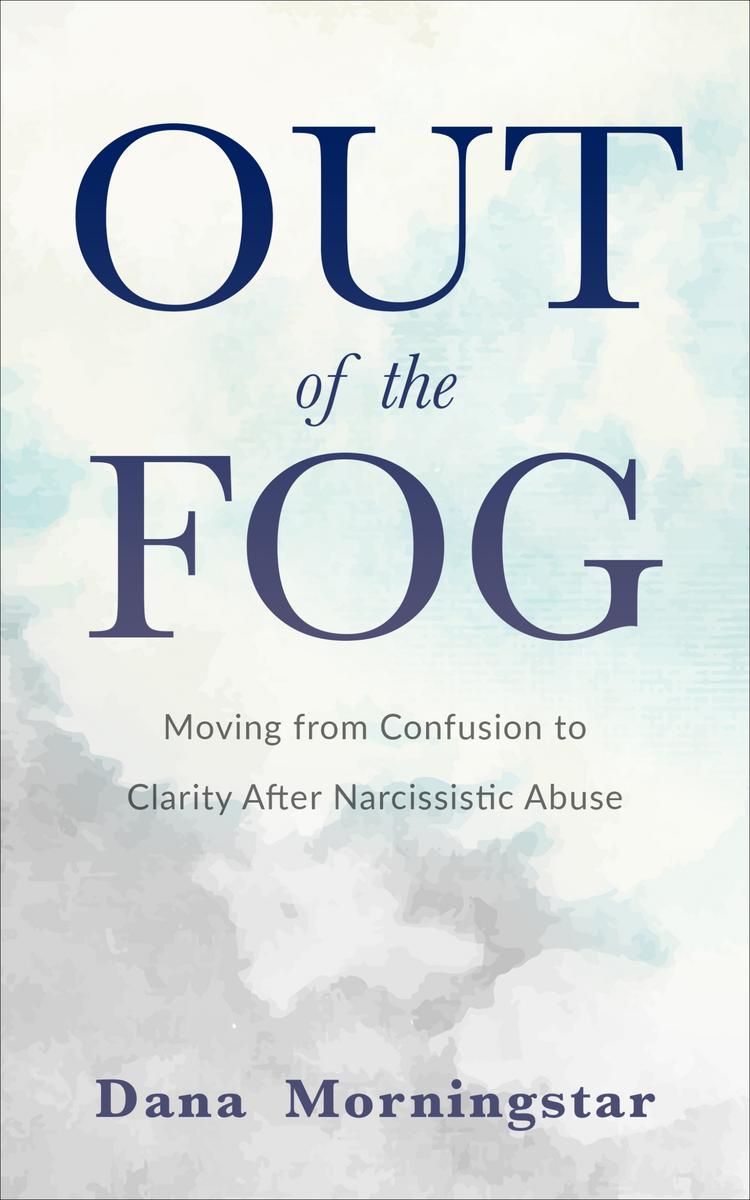
Out of the Fog Moving from Confusion to Clarity After Narcissistic Abuse
¥81.67
Lying. Cheating. Manipulating.?Will they ever change??What will it take to get through to them??They apologized, but will this time be different...or will they just get better at hiding what they are up to??This book will help you get out of the fog of confusion and into the clarity that you are looking for.?FOG is an acronym that stands for "Fear, Obligation, and Guilt." These three emotions are often at the core of manipulation, and are often how narcissists, sociopaths, and other types of emotional manipulators go about controlling their targets.?However, this type of destructive manipulation isn't just limited to narcissists and sociopaths.?There is no shortage of people with well-intended bad advice out there who unintentionally fall into the FOG as well, and push targets of abuse into keeping the relationship going.?The FOG is one of the main reasons that people stay "stuck" in abusive relationships for so long, why they continue to get involved with abusive people, why they feel that they are the problem, and why they tend to feel that the abuse is somehow their fault.?When a person is being manipulated they have a hard time figuring out who has the problem, what is normal, what is problematic, and if their wants, needs, and feelings are valid. The disasterous effects of being lost in the FOG are confusion, crazymaking, people pleasing, and an erosion of boundaries.?What makes this well-intended bad advice so damaging is that, on the surface, it seems like good advice--especially if it's coming from people who seem to have our best interests in mind, such as friends, family, church members, support group members, or a therapist.?Some examples of this well-intended bad advice that comes from other people is:?"Who are you to judge?" "No one is perfect." "You need to forgive them." "She's your mother, you need to have a relationship with her...she's not getting any younger you know." "Commitment is forever."?What can be so crazymaking for targets is that they are often getting two very different messages. On one hand, they are told that they need to work towards a solution, and on the other, they are told that need to leave a partner who lies, cheats, steals, hits, yells, or belittles them.?This book compares and contrasts of these concepts so that targets of any type of manipulation and abuse can make a more empowered decision.?Some of the concepts covered are:?Who are You to Judge vs. Being DiscerningNo One is Perfect vs. Tolerating AbuseYou Need to Forgive Them vs. Keeping Yourself SafeA Parent vs. A PredatorCommitment vs. CodependencySelf-love vs. SelfishnessA Person Acting the Part vs. A Person Actually ChangingGut Instincts vs. HypervigilanceA Friend vs. Someone Being FriendlyCaring vs. CaretakingBeing in Love With Them vs. Being in Love With Who They Pretended to BeWorkable Behavior vs. Deal BreakersAcceptance vs. AllowanceGoing Through So Much Together vs. Being Put Through So Much By ThemSincerity vs. IntensityHealthy Bonding vs. Trauma BondingInsincere Remorse vs. Sincere RemorseReacting vs. Responding...and many more.

Uma prova de amor
¥8.99
Até onde você iria por quem você ama?Um casal de noivos vai ao cinema no shopping. Na saída, o casal é seqüestrado por um estranho homem que n?o pede dinheiro e nem outro tipo de resgate. Ele apenas deseja fazer um jogo!E para salvar o seu noivo, Melissa terá que dar a maior prova de amor de sua vida.

Bebidas naturales para su salud
¥9.16
Un jugo fresco curativo o un té de hierbaspara su salud Pequea guía digital con recetas de jugos frescos de frutas y verduras y con tés de hierbas La vida está llena de simples placeres que pueden convertirse fácilmente en pura felicidad Por qué no pasar a lo natural … o más bien volver N°0 - Bebidas naturales para su salud En este número "cero" de la colección "eGuide Nature" vamos a ver cómo preparar bebidas naturales, jugos frescos o tés de hierbas para cuidar de su salud. Qué vas a encontrar en este eGuide Nature Nuestros consejos para preparar jugos frescos curativos Nuestros consejos parapreparar tés de hierbas 20recetas par su salud Atentamente, Cristina Olivier Rebiere
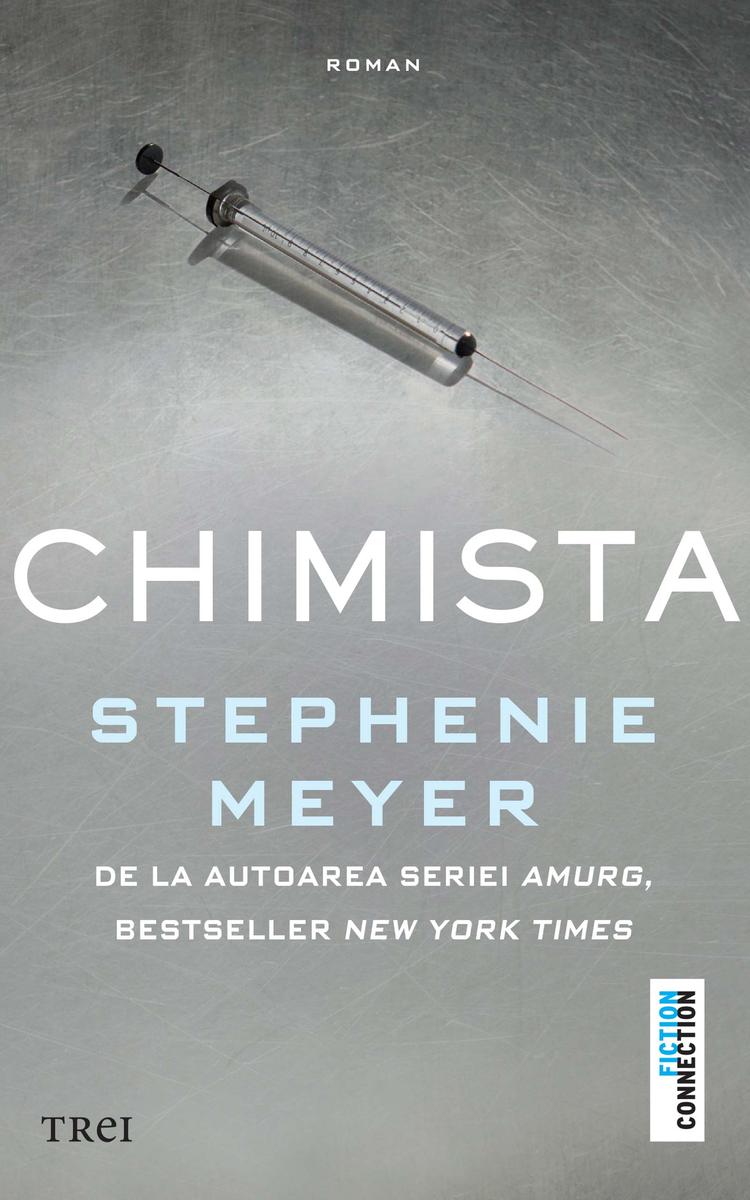
Chimista
¥106.19
De la autoarea seriei AMURG, bestseller New York Times A fost ?arma" secret? a uneia dintre agen?iile-fantom? ale guvernului american. C?nd a devenit incomod?, au decis s? o lichideze. Ca s? r?m?n? ?n via??, s-a transformat ?ntr-un cameleon care jongleaz? cu identit??ile ?i adresele. L-au ucis pe singurul om ?n care avea ?ncredere, ?ns? ea reprezint? ?n continuare o amenin?are. Vor s-o vad? moart?, ?i asta c?t mai repede. C?nd fostul ?ef ?i ofer? o cale de ie?ire, realizeaz? c? ar fi singura ?ans? de a-?i reinventa destinul. Dar pentru asta va trebui s? accepte o ultim? misiune. Constat? ?ns? c? informa?iile pe care le ob?ine o pun ?ntr-o situa?ie ?i mai primejdioas?. Hot?r?t? s? ?nfrunte direct amenin?area, se preg?te?te pentru cea mai dificil? lupt? din via?a ei, dar se ?ndr?goste?te de un b?rbat. Noua pasiune nu poate dec?t s?-i mic?oreze ?ansele de supravie?uire. Aflat? ?n impas, ??i valorific? talentele unice ?n feluri pe care nu ?i le-a imaginat niciodat?. ?n acest roman cu o intrig? bine ?ncheiat?, Stephenie Meyer creeaz? o nou? eroin? aprig? ?i fascinant?, cu abilit??i ie?ite din comun. Ne arat? ?nc? o dat? de ce este una dintre cele mai bine v?ndute autoare din lume. ?Felul cum Meyer gestioneaz? curiozitatea cititorului, ?ntre?in?nd ?i control?nd fluxul informa?iilor, demonstreaz? o m?iestrie de virtuoz… Oamenii nu vor doar s? citeasc? romanele lui Meyer; ei vor s? p?trund? ?n interiorul lor ?i s? tr?iasc? acolo." — Lev Grossman, Time ?Meyer scrie cu o claritate luminoas?, f?r? s? se interpun? nicio clip? ?ntre cititor ?i ceea ce ??i imagineaz? acesta. Originalitatea ei este incontestabil?." — Orson Scott Card, autorul seriei Jocul lui Ender ?Meyer este mai interesat? de rela?ii dec?t de conven?iile superficiale ale genului… Lec?ia ei de via?? pozitiv? este dezarmant?." — Jeff Giles,Entertainment Weekly ?Nu cite?ti un roman de Stephenie Meyer, ci ?l tr?ie?ti, al?turi de personajele vii ?i conving?toare pe care le-a creat. Meyer are modul s?u special de a-l implica pe cititor ?n via?a personajelor ei." — Ridley Pearson, autorul bestsellerului White Bone




 购物车
购物车 个人中心
个人中心



